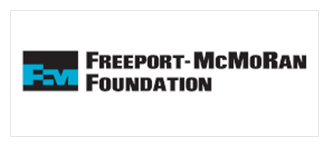The early years of a child’s life lay the foundation for future learning, development, and lifelong health. Rich, stimulating environments promote development, while early negative experiences can carry lasting deleterious effects. With the majority of parents of young children in the labor force, many families face the need to find safe, engaging care for their children outside of their homes in order to work or to continue their education. In addition, many families seek out early learning programs to help assure their preschool age children are prepared to make a strong start in school. Children who participate in high quality early learning programs tend to have better socio-emotional, cognitive, academic, and health outcomes than those who do not. Children in high quality programs repeat grades less frequently, obtain higher scores on standardized tests, experience fewer behavior problems, and are more likely to graduate from high school. The positive effect of early education is particularly pronounced for children from disadvantaged backgrounds.
Access to quality, affordable early care and education opportunities can be limited, however. Areas lacking an adequate child care supply have been termed “child care deserts,” defined as a ZIP codes containing at least 30 children under age 5 that have limited or no center-based early care and education programs (i.e., there are more than three times as many children under age 5 as there are spaces in the child care settings).33 The Center for American Progress mapped these areas in eight states across the U.S., finding that 40 percent of residents in the area studied lived in child care deserts. Even when child care and education is available, the cost can be prohibitive. If not enrolled in publicly-funded programs, which are often free or reduced cost, the annual cost of full-time center-based care for a young child in Arizona is nearly equal to the cost of a year at a public college.
This report identifies and maps child care deserts in the greater Tucson area, and describes the sociodemographic characteristics of these local areas that have limited access to child care. Given the importance of quality in early care and education settings, we additionally identify high quality child care and early education deserts in the region and explore the accessibility of high quality early education programs for preschool-age children, considering cost as well as location. The goal of the project was to assess the gap in early care and education providers and to identify areas that might most benefit from targeted efforts to assure young children have better access to early care and learning opportunities.
What we did
Using a variety of data sources, we identified a total of 723 child care and early education providers in the greater Tucson area. These included 185 center-based providers, 129 Head Start or public school-based providers, and 409 home-based providers with a combined estimated capacity to serve 30,102 children (some of whom are older children cared for after school). Of these, 233 providers with a capacity to serve just over 15,000 children were identified as high quality, defined for this project as providers with a quality rating from Arizona’s Quality Rating and Improvement System (Quality First); nationally accredited providers; Head Start providers; and public school-based early learning programs.
Comparing the capacity of early care and education providers to the number of young children in the greater Tucson area, we found that 46 percent of local ZIP codes are child care deserts for young children ages birth to 5, and nearly half of Tucson’s population of young children (49%) live in a child care desert. Statistical comparisons of the deserts and non-deserts found that the child care deserts had a significantly greater concentration of households with young children (18%) than non-deserts (11%) and that households in deserts were significantly more likely to have a grandparent present (5%) than the households in non-deserts (2.5%).
Including home-based providers in our analysis had little effect on the results; all but one of the ZIP codes identified as a child care desert in the original analysis was so identified when home-based providers were included. However, home-based providers emerged as an important source of care for two sub-populations: Hispanic and Latino families and families in poverty. Restricting the set of providers to those who met the criteria for quality care changed the results dramatically. Under this stricter definition, 31 of the 46 ZIP codes in the area (67%) were categorized as high quality child care deserts. These deserts are home to 89 percent of young children in the greater Tucson area (see figure 1). Only six ZIP codes in the greater Tucson area have a sufficient number of high quality early care and education slots to serve the children living within their boundaries.
Figure 1: A large share of young children in the greater Tucson area live in preschool or child care deserts

Figure 2 is an interactive map that shows child care deserts in Tucson. Click on the zip code to learn more about the number of children and the accessibility of child care.
We also specifically considered the availability of high quality early education opportunities for preschool-aged children (ages 3 to 4) through both the lens of child care deserts and more nuanced considerations of access. Just over a quarter of ZIP codes (26%) in the greater Tucson area are preschool deserts, where there are more than three times as many preschool-age children as early education slots. These deserts are home to 30 percent of preschool-age children in the area. To further explore spatial accessibility to high quality early education, we used a two-step floating catchment area approach, which takes into account all of the available preschool programs within a certain distance of a child’s home, whether or not they are within the child’s home ZIP code. We found that families living in census tracts in the central parts of Tucson, in Oro Valley, the Catalina Foothills, South Tucson, Vail, and Sahuarita have the greatest access to quality early education programs. Neighborhoods in the southern and western parts of Tucson appear to have an especially acute need for additional nearby early education providers.
Beyond spatial accessibility, access to transportation and the financial means to afford the cost of early care and education may influence a family’s ability to access early care and education opportunities. More than a quarter of households lack an available vehicle in neighborhoods along the Oracle Road corridor south of River Rd, in South Tucson, and near 29th St and Alvernon. For families without a vehicle, lack of transportation may prevent them from accessing preschools that are only a few miles away but difficult to access by foot or by public transit. Even if a family lives near an early education provider with slots open for their child and has a means of transportation to reach that provider, the cost of enrolling a child in early education may prove too much for that family to afford. To afford full-time early care and education for a preschool-age child in Pima County (median cost: $7,200), a family at the median income level (about $47,000) would have to pay 15 percent of their income. This cost is even higher for single parent households. There are no-cost programs, such as Head Start, and child care subsidies or scholarships available for low-income family, but these resources are limited. The dynamics of spatial, transportation, and financial access to early care and education in the greater Tucson area likely contribute to the relatively low rate of early education enrollment; however, further research is needed to establish the degree of relation between these access dimensions and participation in early education in our area.
What our findings mean for Tucson
Clearly, there is a need for investment in quality child care and early education in the greater Tucson area. The importance of high-quality early care and education cannot be overstated. Support for improving quality in existing programs as well as establishing new high quality programs is particularly needed because there are nearly five times as many children ages birth to 5 as slots in high quality early care and education providers. Supports in the form of more low-cost or no-cost early care and education opportunities, transportation assistance, and child care scholarships could particularly benefit families. Furthermore, home-based early care providers are an important source of care especially for Hispanic families and families with low financial resources. The establishment and continuation of high quality home-based programs could support families in communities across Tucson, with the additional benefit of promoting small, local businesses. Ultimately, expanding the early care and education options for all families will provide children with better access to safe, quality care to support their learning and development and will offer a better chance for parents to contribute to the economy of our community.












